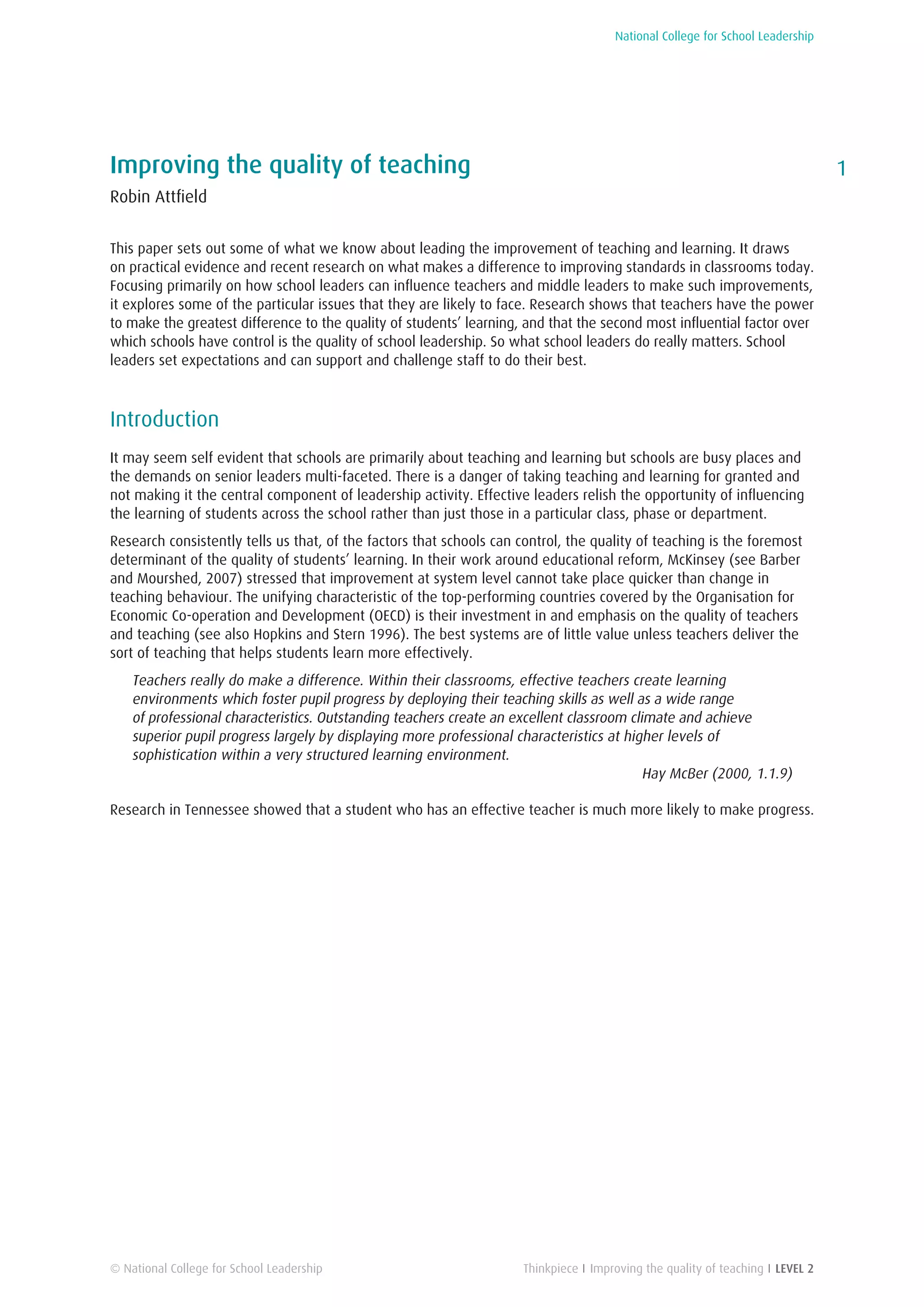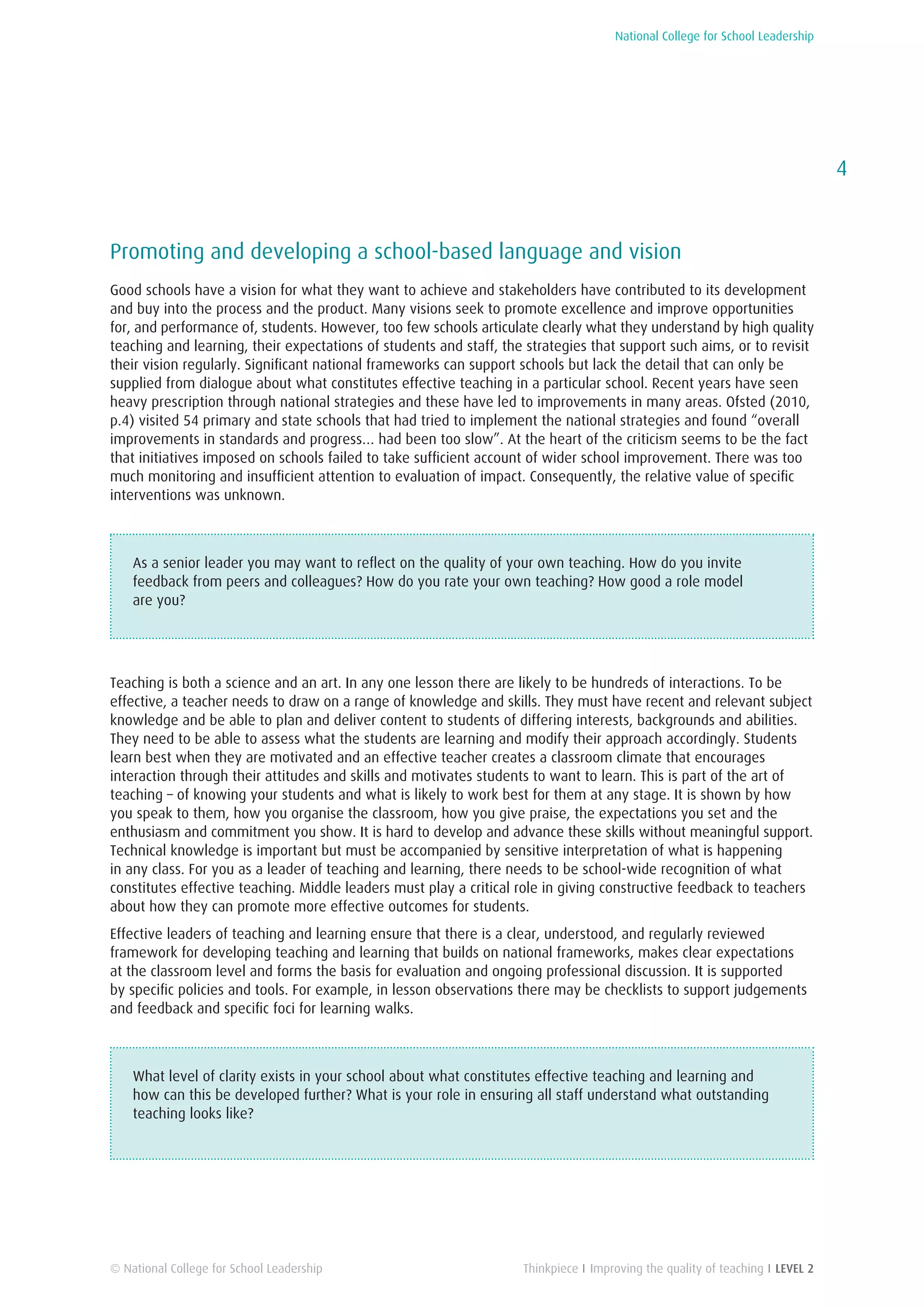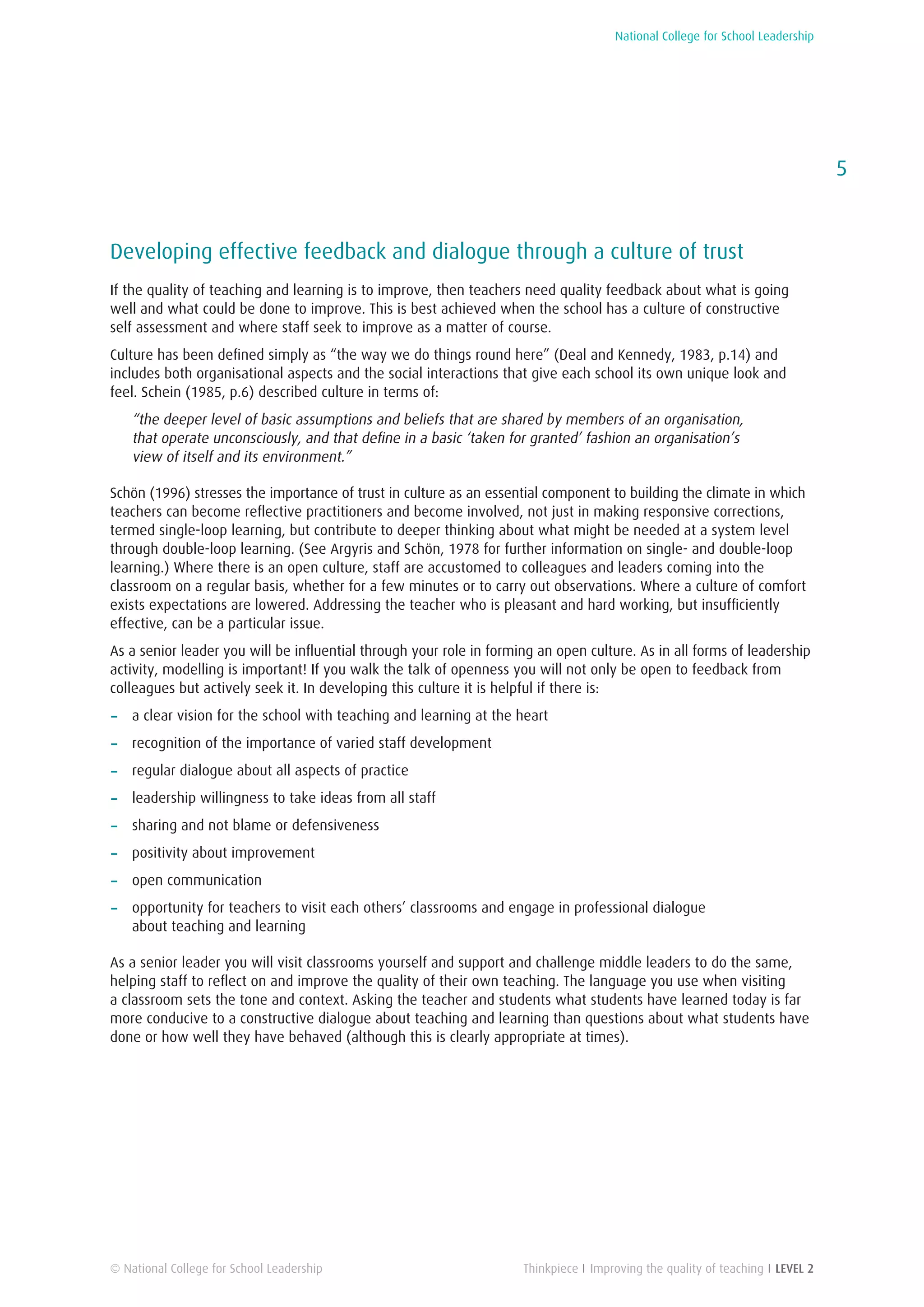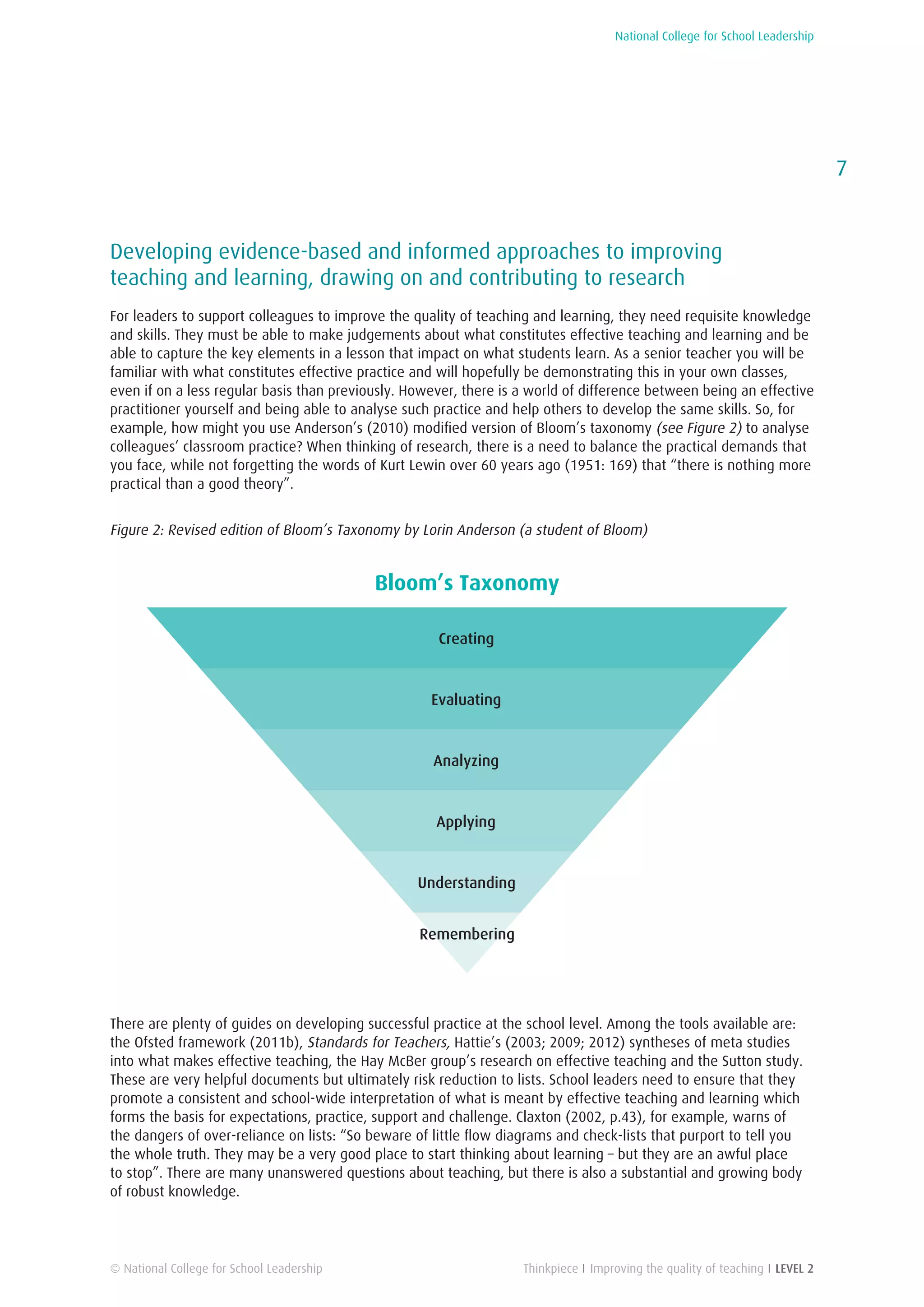This document discusses improving the quality of teaching through effective school leadership. It makes three key points:
1) Research shows that teacher quality has the greatest impact on student learning outcomes, so school leaders must prioritize improving teaching. Leaders can influence teaching through setting expectations, supporting teachers, and challenging them to improve.
2) To improve teaching, leaders must develop a clear school-wide vision of effective teaching and learning, establish a culture of trust and feedback, and provide meaningful support and challenge to teachers.
3) Leaders need knowledge of effective teaching practices to make accurate judgements and support teachers through evidence-based approaches. They must draw on research to inform improvement efforts and contribute their own school-based research.















